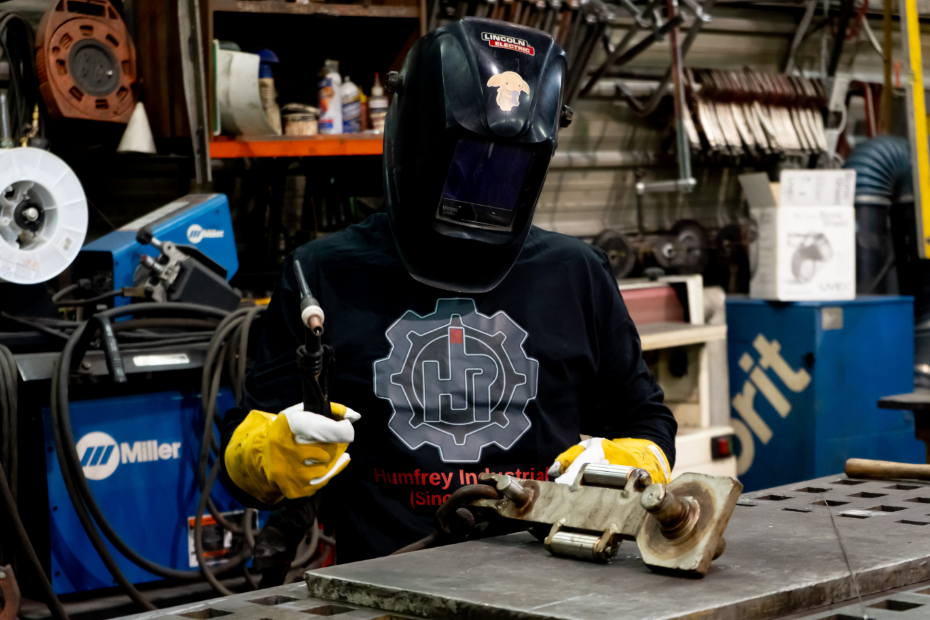Skip To What You Need To Know
In 2025, the industrial landscape is more competitive than ever. Clients demand faster turnarounds, regulators expect compliance, and tight budgets leave little room for error. For businesses that rely on heavy machinery or precision equipment, preventative maintenance isn’t just a line item; it’s a strategic imperative.
What sets preventative maintenance apart today is the integration of smart systems and predictive data analytics, making it more than routine servicing. It’s about identifying and addressing potential issues before they escalate, ensuring your operations run smoothly and efficiently. With tools like these at your disposal, you’re not just managing equipment—you’re safeguarding your business’s productivity, reputation, and profitability.
This proactive approach isn’t just about machinery; it’s about creating peace of mind. It ensures that your team can focus on delivering results instead of troubleshooting breakdowns. By committing to preventative maintenance, you’re investing in more than your equipment—you’re investing in the long-term success and resilience of your operations.
What is Preventative Maintenance?
Imagine this: A vital piece of equipment grinds to a halt mid-production. Alarms sound, workers scramble, and the clock ticks as downtime costs climb into the thousands per hour. This isn’t just a hypothetical—it’s a scenario many industries know all too well. Yet, it’s also one that preventative maintenance can help you avoid entirely.
At its core, preventative maintenance involves regular inspections, servicing, and updates to ensure your machinery operates at peak performance. It’s about addressing potential problems before they become costly disruptions. The approach flips the narrative—no longer reacting to breakdowns but proactively safeguarding against them.
Industries like oil and gas, manufacturing, and transportation understand the stakes. Consider this: a single hour of downtime in an oilfield can cost upwards of $100,000. A well-structured preventative maintenance plan not only prevents such losses but also ensures uninterrupted productivity and peace of mind for your team.
Today, preventative maintenance is smarter than ever. Sensors monitor equipment performance in real-time, predictive analytics flag potential failures, and tailored schedules optimize service cycles. It’s not just maintenance—it’s a strategic investment that protects your bottom line while enabling long-term growth.
Want to take the guesswork out of machinery upkeep? A trusted partner like Humfrey Industrial Repairs can help you implement proactive solutions tailored to your unique operations.
Why Preventative Maintenance Matters in 2025
In today’s industrial landscape, the pressure to do more with less has never been greater. Whether it’s meeting tighter deadlines, maximizing production capacity, or navigating rising operational costs, businesses need every edge they can get. That’s where preventative maintenance comes in—it’s not just an operational task; it’s a strategic advantage.
Imagine the ripple effect of unexpected equipment failure. One small issue with a hydraulic press can halt an entire production line, delaying deliveries, disappointing clients, and escalating repair costs. Preventative maintenance changes the narrative by giving you control. By addressing minor faults early, it prevents these domino effects, ensuring your operations stay seamless.
In 2025, the game has changed. Preventative maintenance strategies are no longer just about oil changes and routine checks—they’ve embraced technology. With tools like IoT-enabled sensors and predictive analytics, businesses can anticipate issues with pinpoint accuracy, reducing downtime and costs.
Here’s why preventative maintenance is non-negotiable this year:
- Reduce Downtime: Unexpected breakdowns disrupt schedules and revenue. Regular inspections prevent small issues from becoming major setbacks.
- Extend Equipment Lifespan: Machinery that’s well cared for lasts longer, protecting your investment and reducing the frequency of costly replacements.
- Optimize Energy Efficiency: Properly maintained equipment runs more efficiently, cutting energy costs while supporting sustainability goals.
- Enhance Workplace Safety: Faulty equipment is a safety hazard. A proactive maintenance approach keeps your team safe and your operations compliant.
In industries where every second counts, preventative maintenance isn’t just a best practice—it’s the foundation of success. By integrating smarter tools and strategies, you’re not just maintaining machinery; you’re building resilience into your business.
Preventative Maintenance Benefits for Your Bottom Line
Preventative maintenance isn’t just about keeping machines running—it’s about transforming the way your business operates. The right approach not only protects your equipment but also boosts your bottom line in ways that reactive strategies simply can’t match. Here’s how:
- Lower Repair Costs
Think of preventative maintenance as your insurance against expensive breakdowns. Addressing small issues early—such as tightening a loose component or replacing a worn belt—prevents them from spiraling into catastrophic failures. For example, a simple $50 replacement part could save you thousands in emergency repairs and unplanned downtime. - Better Budget Control
Reactive repairs throw financial planning into chaos. A last-minute repair could mean higher costs for parts, expedited shipping, and emergency service fees. With preventative maintenance, costs become predictable. Scheduled servicing allows you to budget accurately, avoiding the shock of unexpected expenses. - Higher Productivity
Every hour of downtime is an hour of lost productivity. Preventative maintenance ensures your machinery runs like clockwork, keeping your team on schedule and your clients happy. For instance, in custom machining, a delay caused by CNC equipment failure could result in missed deadlines and dissatisfied customers. Keeping your equipment in peak condition means staying ahead of commitments.
Preventative maintenance is about more than savings—it’s about peace of mind. It allows you to focus on scaling your business and delivering exceptional results, knowing your equipment won’t let you down.
Strategies for Implementing Preventative Maintenance
Preventative maintenance isn’t a one-size-fits-all solution—it’s a tailored approach that fits the unique demands of your operations. Building an effective maintenance plan requires careful consideration and strategic implementation. Here are three actionable steps to get started:
- Create a Maintenance Schedule
A proactive schedule is the backbone of preventative maintenance. Start by consulting manufacturer guidelines and factoring in equipment usage patterns. For instance, machinery operating 24/7 in high-demand environments may require more frequent inspections than lightly used equipment. Tailoring your schedule ensures that every asset gets the attention it needs without over-servicing. - Invest in Training
Your team is your first line of defense. Equip them with the knowledge to identify early warning signs, like unusual vibrations, excessive heat, or strange noises. Proper training empowers your staff to catch minor issues before they become major disruptions. This collaborative approach fosters accountability while extending the lifespan of your equipment. - Leverage Technology
The future of preventative maintenance lies in technology. Modern solutions like IoT sensors and predictive analytics allow you to monitor equipment health in real time. Imagine a system that alerts you to potential issues before they cause downtime. These tools take the guesswork out of maintenance, ensuring you stay ahead of potential problems and optimize servicing schedules.
When implemented effectively, these strategies don’t just prevent breakdowns—they drive efficiency, save costs, and empower your team to work smarter. At Humfrey Industrial Repairs, we help businesses design and execute customized maintenance plans to fit their operations.
How to Reduce Maintenance Costs with a Proactive Approach
Reducing maintenance costs isn’t about cutting corners—it’s about working smarter. A proactive approach ensures long-term savings by preventing expensive repairs, minimizing downtime, and extending the life of your equipment. Here’s how to make every dollar count:
- Use High-Quality Materials for Repairs
It’s tempting to opt for cheaper parts to save upfront costs, but this often leads to frequent replacements and recurring issues. Investing in high-quality materials ensures reliability and durability, reducing the need for future repairs. For example, Humfrey Industrial Repairs specializes in precision machining and fabrication, offering components that stand the test of time. - Partner with Local Experts
When unexpected issues arise, having a trusted, local partner can make all the difference. Local repair shops not only provide faster response times but also deliver personalized service tailored to your specific needs. At Humfrey, we combine decades of expertise with a quick turnaround to keep your operations on track. - Implement Regular Inspections
Preventative inspections are a small investment that yields big savings. Routine site visits—like those offered by Humfrey Industrial Repairs—help identify potential issues in real-world operating conditions. Spotting a minor fault early can prevent costly breakdowns, saving you significant time and money.
By prioritizing these proactive measures, you’re not just reducing costs—you’re building a foundation for reliability and efficiency. Whether it’s selecting durable materials or relying on expert partners, each step strengthens your operations and protects your bottom line.
The More You Know: Preventative Maintenance Standards
Standards are the backbone of effective preventative maintenance. They provide a roadmap for optimizing equipment performance, minimizing risks, and reducing long-term costs. One of the most recognized frameworks in the industry is ISO 55000, an international standard for asset management. But how does it help your business?
ISO 55000 emphasizes the importance of routine maintenance as part of a larger strategy for managing physical assets. By aligning your processes with these best practices, you can:
- Improve Maintenance Efficiency: Standardized processes streamline inspections, servicing, and reporting, ensuring consistency across your operations.
- Reduce Long-Term Costs: Effective asset management minimizes unnecessary wear and tear, prolonging the lifespan of critical equipment.
- Enhance Compliance and Trust: Adhering to established standards demonstrates your commitment to safety, quality, and operational excellence—key factors in earning client confidence.
For example, implementing ISO 55000 practices in industries like oil and gas can dramatically reduce the risks associated with sudden equipment failure. It ensures that every component of your operation is maintained to exacting standards, keeping downtime and repair costs to a minimum.
At Humfrey Industrial Repairs, we understand the value of aligning maintenance programs with industry standards. Whether it’s routine inspections or tailored machining solutions, our team helps you stay compliant while optimizing performance.
The Role of Preventative Maintenance in Sustainability
In an era where sustainability is no longer optional, preventative maintenance plays a vital role in helping businesses reduce their environmental footprint while improving efficiency. It’s a win-win strategy that balances operational needs with the growing demand for greener practices.
Here’s how preventative maintenance contributes to sustainability:
- Reducing Waste: Properly maintained machinery produces fewer defective parts and minimizes scrap material. For example, a well-calibrated CNC machine ensures precision, reducing the need for rework and wasted resources.
- Lowering Emissions: When equipment operates efficiently, it consumes less energy and generates fewer emissions. This is especially critical for industries striving to meet strict environmental regulations.
Take high-volume production facilities as an example. By prioritizing preventative maintenance, these operations not only achieve greater efficiency but also align with sustainability goals. At Humfrey Industrial Repairs, we’ve seen how our precision machining services help clients optimize processes, ensuring less waste and more sustainable operations.
By integrating preventative maintenance into your sustainability strategy, you’re not just saving costs—you’re contributing to a cleaner, more responsible industrial future. Whether it’s reducing material waste or improving energy efficiency, every step matters.
Prioritize Preventative Maintenance in 2025
The benefits of preventative maintenance—cost reduction, operational efficiency, enhanced safety, and sustainability—are undeniable. In 2025, this proactive approach is no longer just a best practice; it’s an essential strategy for any business looking to stay competitive and resilient in a rapidly changing industrial landscape.
By investing in preventative maintenance, you’re not only avoiding costly breakdowns but also empowering your team, protecting your assets, and setting the stage for long-term success. It’s a commitment to better performance, reduced risk, and smarter resource management.
At Humfrey Industrial Repairs, we specialize in helping businesses like yours implement tailored preventative maintenance plans. From custom machining to on-site inspections and precision fabrication, our solutions are designed to keep your equipment running at its best—day in and day out.
Ready to take the next step? Contact us today to discuss how our expertise can support your preventative maintenance strategy and ensure your operations excel in 2025 and beyond. Let’s keep your business moving forward, together.

